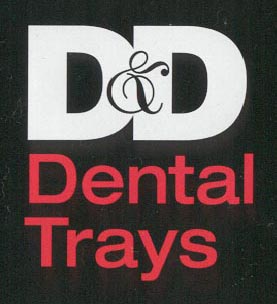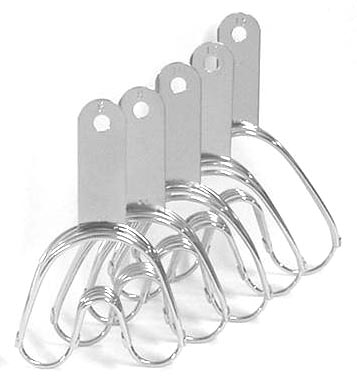|
|
|

Questions
Q: I have used the closed mouth impression technique in the past but all the trays I used had mesh centers. Why doesn't the D&D tray have a mesh center?
A:The reason many trays have a mesh center is to prevent the tray from spreading apart in the buccal lingual dimension. The D&D tray is rigid and does not require a thin cloth for support.
Q: I use Imprint II impression material how do I load the D&D tray without a mesh?
A: Simple, the Imprint II tray material can be loaded from the back of the tray to the front in a continuous flow of impression material or hold the tray sideways and "walk" the impression material onto the tray front to back, back to front until the impression material in stacked to fill the entire tray. If you get streaks or folds in the tray material simply fill the folds or overlaps with wash material, syringe around the tooth and take your impression.
Q: I use a heavy body tray material by Coltene and a regular body wash, I have no problems loading directly from the cartridges using the Quad tip into the D&D tray, however my partner finds the process a little difficult, any suggestions?
A: Have your partner lay the D&D tray flat on a clean heavy glass mixing slab. Hold the tray by the handle with slight downward pressure so the tray doesn't move and load the heavy body material from the back to the front in a continuous motion. When the tray is loaded with downward pressure slide the loaded tray off the glass slab.
Q: What are D&D trays made of and how many times can I reuse my trays.
A: D&D trays are made of stainless steel. If properly cared for your D&D tray will last for many hundreds of impressions. Enjoy the quality of the D&D tray.
Q: I use a putty tray material with the D&D tray. In the past I have used only the sectional trays but now plan to use the full arch trays for multiple units and bridges, what do you think about using a putty separate wash technique with the D&D tray?
A: The putty separate wash technique or two stage putty technique is ideal with the D&D tray. The two stage technique works best with a rigid tray and your D&D tray certainly fits the bill. Make sure to thoroughly relieve your initial putty impression, keep the initial putty impression clean, and make sure to reseat your initial impression completely.
Q: I use the D&D tray with 3M putty/wash impression material, I heard you can take snap impressions with alginate is this true.
A: Yes you can take alginate impressions with the D&D tray. Use an alginate with a firm body, good tear resistance, and a fast set. Have the patient practice closing lightly together as opposed to a firm closure. Load your D&D tray to the edge with alginate, smooth the surface of the alginate, insert the loaded into the patient’s mouth, have the patient close lightly then gently position the patient’s lips to a closed position. When the alginate sets have the patient open and snap remove the impression.
Q: Currently I use the D&D #8 sectional using a putty wash technique. The tray, actually I have about ten as I send my cases to the lab to be poured, is great! I am going to buy some of the full arch trays what are the most commonly used sizes?
A: Glad you like the D&D tray. The trays come in three sectional sizes 6, 8, and 10, 6 being the smallest and 10 the largest. In full arch trays the sizes are 6, 8, 10, 12, and 15, 6 being the smallest and 15 the largest. The most commonly used sectional tray is the #8 followed by the #6 and then #10 size. In the full arch tray the most commonly used sizes are the #8 and #10, followed by the #6 and #12, with the #15 being the least often used size.
Full arch trays available in 5 sizes. #6, #8, #10, #12, #15.

Sectional trays available in 3 sizes. #6, #8, #10.
D&D trays | why D&D trays | order/contact | main
Content Copyright 1998, Superior Dental & Surg. Mfg. Co., Inc.
Source code & object code Copyright 1998: Primecom Interactive, Inc.
Subject to terms of license agreement.